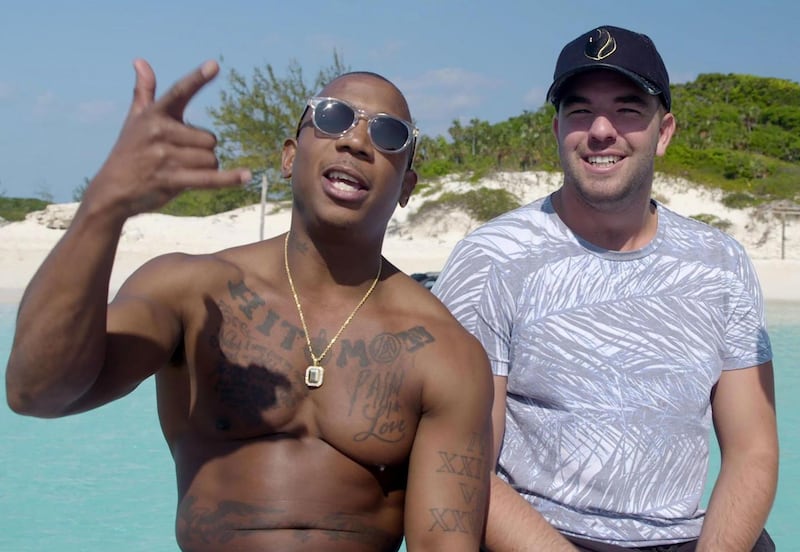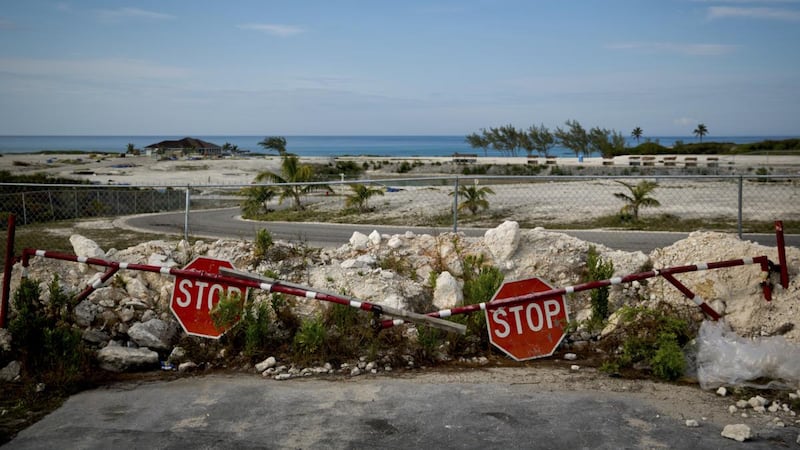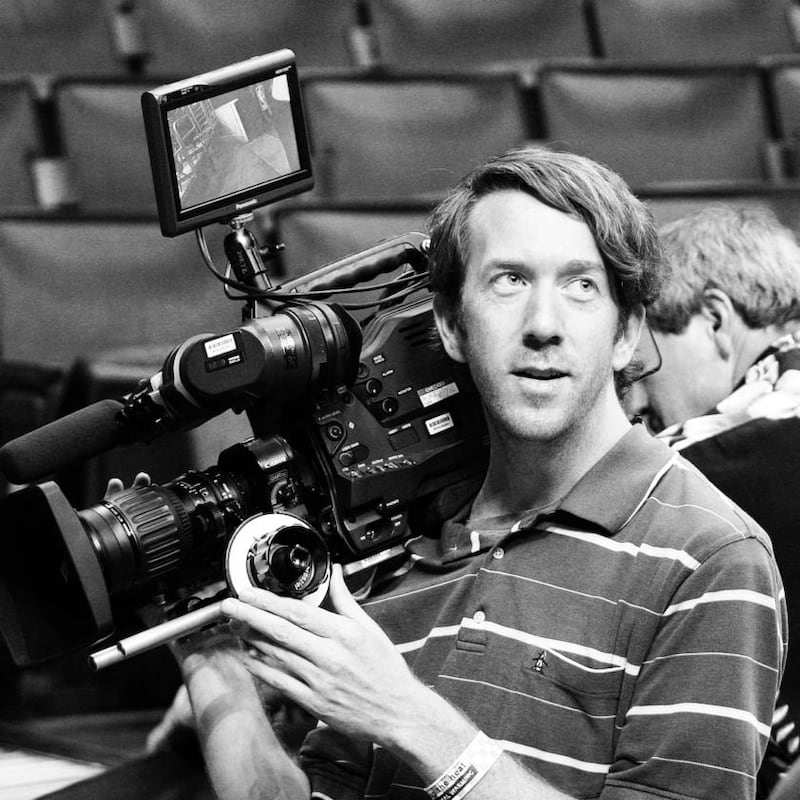"I wasn't following it at the time," Chris Smith says of the events detailed in his new documentary. "I saw the news story when it fell apart, but since I was working on another film" – 2017's incredible Jim & Andy: The Great Beyond –"I wasn't monitoring social media and I didn't see any of the original material."
The material he missed was the coverage surrounding the catastrophic derailment of the Fyre Festival, a music event billed as the most exclusive ever helmed, a retreat to an island in the Bahamas "once owned by Pablo Escobar", sold with a marketing push featuring the world's most famous models, Instagram celebrities and social influencers. The stage was set for the most anticipated cultural event in a generation.
Unfortunately, that stage, it turns out, hadn’t been set at all. In April 2017 Fyre became the most infamous concert disaster of this century. How, in the name of Pablo Escobar’s dusty moustache, did this come to pass?
"Ultimately they marketed an event before they had figured out what it was," says Smith, whose Netflix documentary, Fyre: The Greatest Party That Never Happened, has just debuted, one of two films on the subject to be released within four days.
“They were promising something they couldn’t deliver. It was perspective versus reality. They created these amazing marketing materials but what they could actually offer was very different.”
Fyre's flawlessly aspirational video quickly gained traction on Instagram. At least 250 social media mavens were handsomely paid to mount a promotional push
This could be classed as something of a cosmic understatement, as the entire fiasco unravels via a sequence of disastrous developments that become increasingly difficult to believe, and all of which we see in stunning detail.
“The story has this sensationalist, pop-cultural attraction to it, sure,” says Smith. “It ticks a lot of boxes in that sense, but to me what was interesting was the story behind the headlines, something more relatable for people watching.”
To do this Fyre shows not just the event itself but extensive insider footage of the planning and promotion teams. While Hulu's Fyre Fraud operates more as a biopic of mastermind Billy McFarland, Smith's works from the ground up, from its original conception as a marketing opportunity for a talent booking app, to its subsequent descent into full-blown farce.
"I started doing interviews and talking to people who were involved," says Smith, "and in that process met Mick Purzycki chief executive of Jerry Media [the promotional arm of Instagram behemoth @fuckjerry] who were the marketing company that had helped Fyre".
“Together we found a lot of footage we didn’t know existed. We partnered with the company who shot the original promotional video, who were planning on making their own documentary. Collectively we put the pieces together. Through interviews and existing footage we were able to recreate what happened.”

An infamous promo video
The filming of the now infamous promotional video is detailed in depth, showing a vanity project of rare scope and size. It centres on Fyre Cay, that aforementioned strip of untouched beauty in the Bahamas purportedly once owned by drug kingpin Pablo Escobar. There McFarland, and the festival's public-facing brand ambassador, Ja Rule – "very much the face of the festival, but little involved otherwise", according to Smith – cajoling Bella Hadid, Emily Ratajkowski and numerous other Insta-talents, as they showcase the event of a lifetime.
They party, drink and film the models frolicking seductively in a paradise inhabited only by them and an improbably photogenic cohort of wild pigs. There was only one catch; all of this was being done before any of the festival’s specifics had been conceived – not merely its line-up and attractions but its event space, accommodation and amenities such as drainage or electricity.
The flawlessly aspirational video quickly gained traction on Instagram. A network of at least 250 social media mavens were handsomely paid to mount a co-ordinated promotional push, amounting to sharing a burnt orange tile on their profiles stating their intention to attend the festival, along with a short caption inviting their followers to come along too. Kendall Jenner, we are told, is paid $250,000 for a single post. Most are promised glamorous ticket deals, villas and glamping berths, none of which yet exist. It's only when the festival sells out in 48 hours that the rubber begins to hit the road.
“Fyre purported to be a festival that was reflective of the promotional video,” says Smith, “but that turned out to be impossible.”
We heard there was gunshots. We heard there were tents set on fire. Without actual documentary evidence it was hard to corroborate what was real and what wasn't
The festival was soon shunted from Fyre Cay, whose owner had expressly forbidden McFarland from referring to it as "Pablo Escobar's island" only for him to centre it in all their promotional materials – and moved to the decidedly less unspoiled environs of a Sandals resort on Great Exuma. All nearby housing options were quickly exhausted and in place of the glamping-style geodesic tents, the organisers improvised with hundreds of emergency tents left behind from Hurricane Matthew. In a late gut-punch to organisers, heavy rains the night before the festival made even these meagre comforts all but uninhabitable.
“Thankfully, no one got seriously hurt,” says Smith, “but there was the potential for that, which is what people were latching on to, in terms of consequences.”
Was there any truth to the more sensational claims of wild dogs and armed violence? “We heard there was gunshots. We heard there were tents set on fire. Without actual documentary evidence it was hard to corroborate what was real and what wasn’t, so we did our best to gather from eyewitness accounts what actually happened.”

Hungry and miserable
What we do see is thousands of attendees arriving to insufficient accommodation and desultory conditions. Having paid five- and six-figure sums to get there, they now find themselves on a wasteland pocked with soaking wet tents, scaffolding and little else. One viral image of the food on offer, credited with cementing the festival’s demise, shows a sloppily made dry bun with a cheese slice and some lettuce, a far cry from the Michelin-quality sushi promised. How on earth had the organisers let it get to this point?
“They were hoping it was going to come together,” says Smith “and people were going to embrace this version of the festival. If the bands could just get on stage, it would all be okay. Unfortunately, the reality was just too far away. They couldn’t even get close enough for the bands to feel comfortable showing up.
On the eve of the concert, the event is officially cancelled, with thousands of attendees left on-site, uniformly hungry, miserable and with limited options for places to sleep. The distress quickly devolves into panic, anti-social outbursts and collective disharmony. One of the film's less sympathetic attendees proudly boasts of slashing other tents and urinating on mattresses, just so people couldn't stay near him and his friends' area. For the viewer there is, here, a creeping sense of that same schadenfreude that, at that very moment, gripped the world watching from their phone screens: Lord of the Flies starring an annoying cast of social-media bores. For Smith, this obscures how tough it really was for those affected.
“I mean, you look at these headlines and see a very one-dimensional story,” he says, “but being able to dig deeper and see it from their perspective on the front lines made it a very human story. We interviewed a lot of attendees, and I really connected with them. This is even more true of the contractors who tried to pull it off. They were an incredibly thoughtful, conscientious, hard-working, earnest group of people that were put into a a really bad situation, set up to fail.
“A lot of the people who worked on it suffered huge consequences” he says. There was a woman in the Bahamas who owned a restaurant who put most of her life savings into the festival with the expectation of being paid. There’s a lot of consequences for people who helped try to pull it off.”

The villain of the piece
The real villain of the piece is McFarland, featured extensively but not interviewed. “We tried to interview him on a few occasions, but he wanted to get paid and we didn’t feel comfortable with that after so many people were hurt by his actions.”
This decision gained foreground attention this week following a war of words between Smith and the makers of Fyre Fraud, the aforementioned rival documentary that, in a rather brazen power move, was released by Hulu four days before Smith's. That film does feature McFarland and, Smith has claimed, paid him $250,000 for his troubles. Fyre Fraud's team have admitted they paid the disgraced chief executive, while denying the exact amount. As a rejoinder, they also attacked Smith for letting Jerry Media co-produce the film. According to Fyre Fraud co-director Jenner Furst, this placed Smith in "[a more] ethically compromised position … partnering with folks who marketed the Fyre Festival and were well aware that this was not going to happen as planned."
So far, critical consensus has rallied around Smith’s as the superior film, but the nagging question of how much Jerry Media knew, or could have known, does linger in the viewer’s mind. The marketing team appear sympathetic and concerned, but one wonders how on earth they thought they were still pushing a saleable product.

For Smith, the responsibility falls on top brass, rather than the functionaries below, and the last third of Fyre shines a light on the eye-watering deceptions McFarland undertook to precipitate all that followed. His is a story, says Smith, not merely of incompetence or hubris, but rampant fraud.
“Should people have dug deeper, and done better due diligence?” he asks. “Potentially yes, but at the same time you have this festival that had a high profile and lots of big celebrities involved and there’s all these other people investing funds based off false information, so it all builds on itself and gives the perception of something successful when in reality the health of the company was very different. Billy was charismatic, he was very good at selling the dream – when you have someone like that out there, you always will have the potential for a situation like this because that’s part of their strength, their charm.”
So something like Fyre could happen again?
“Anything can happen, if you lie.”










